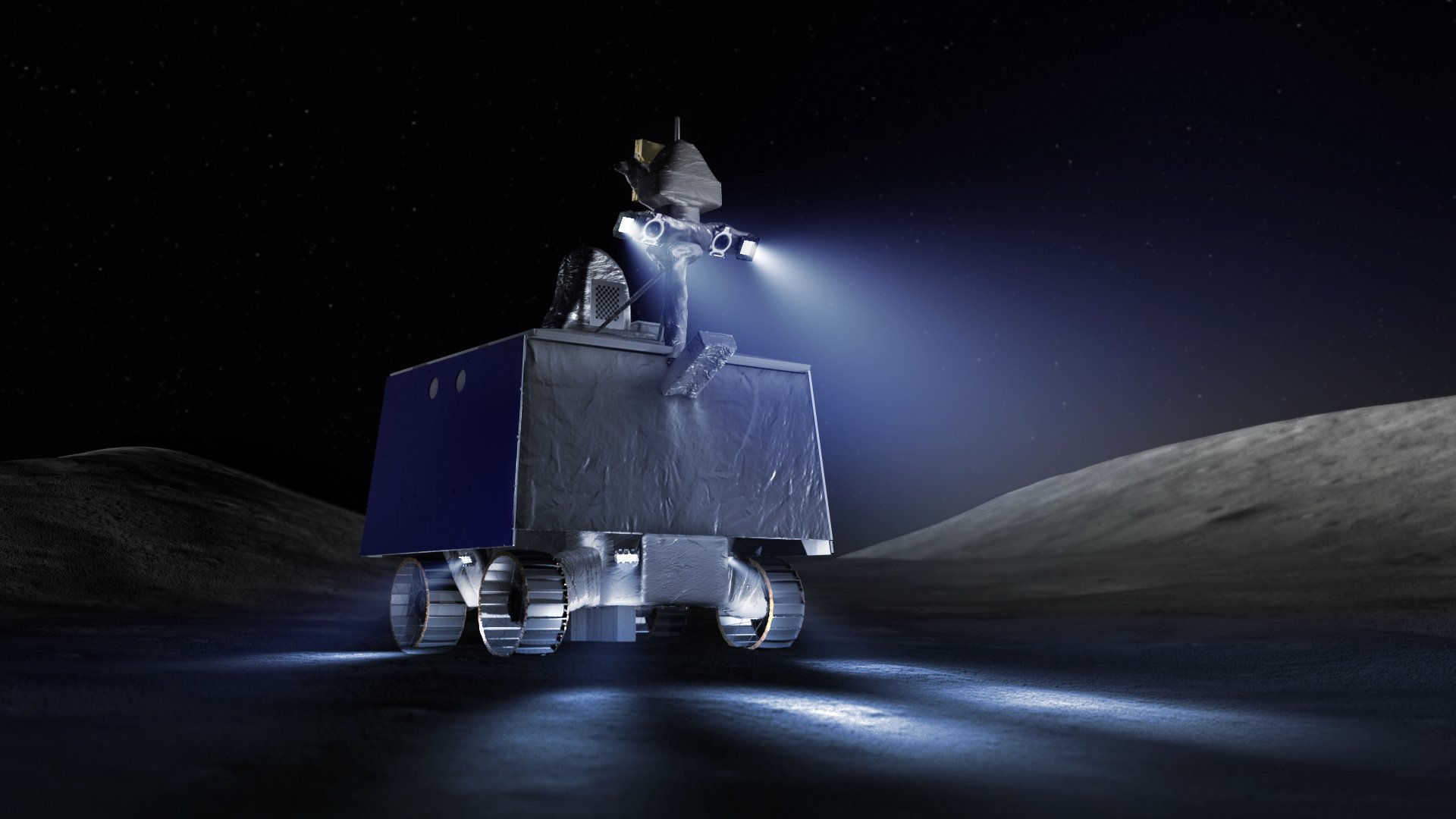Engineers test nimble gimbal on NASA’s next Moon rover

NASA engineers recently tested a vital component of the Volatiles Investigating Polar Exploration Rover (VIPER). The rover, set to explore the Moon's South Pole, relies on a gimbal-pointed high-gain antenna to ensure seamless communication and data transmission.
Astrobotic's Griffin Lander is scheduled to deliver VIPER on Mons Mouton near the Moon’s South Pole in late 2024 as part of NASA's Commercial Lunar Payload Services (CLPS) initiative. The rover is equipped with both a low-gain and high-gain antenna which will enable it to establish communication with the Deep Space Network (DSN) antennas on Earth.
This data is then relayed from NASA's DSN to the Multi-Mission Operations and Control Center at the agency's Ames Research Center, which serves as the headquarters for the rover's operations. To facilitate the transmission of substantial amounts of data over the 240,000-mile distance between the Moon and Earth, VIPER relies on a highly focused, narrow-beam antenna. Since the rover will be constantly on the move, with exceptions for planned stops and specific tasks, such as capturing panoramic images and utilizing its drill, maintaining a consistently accurate antenna pointing capability is crucial.
VIPER utilizes an onboard computer and various sensors to precisely calculate its position on the Moon. One of these sensors is the star tracker, a sensitive camera that captures images of the star field above the rover. By comparing these images to its internal star map, the star tracker determines VIPER's orientation. Additionally, a set of gyroscopes tracks the rover's rotation speed. Using this combined data, VIPER commands the gimbal to make subtle adjustments, compensating for the rover's motion and ensuring the antenna remains accurately pointed towards Earth.
However, engineers faced a challenge in testing this intricate system on Earth. They came up with a solution - flipping the problem around. The engineers drove a prototype rover in California while directing its antenna towards the Moon. The engineers recently tested the latest prototype of VIPER, known as MGRU3 (Moon Gravitation Representative Unit 3) at night in the Roverscape at NASA Ames Research Center in California's Silicon Valley. Both the antenna and gimbal system performed exceptionally well.
"We found that the Moon stayed dead center even while the prototype performed a sprint drive over the largest rock in our Roverscape, which is one of the most challenging cases. We're now even more confident the system will work on the Moon," said Terry Fong, deputy manager of the VIPER rover.
Solving a dilemma with an antenna and a nimble gimbal. Engineers at @NASAAmes recently tested a gimbal on the Volatiles Investigating Polar Exploration Rover (VIPER), preparing the rover for future communications as it explores the lunar surface. https://t.co/vUGzsKOJDp pic.twitter.com/81F59M6jGL
— NASA Artemis (@NASAArtemis) June 2, 2023
- READ MORE ON:
- NASA VIPER rover
- VIPER prototype testing
- NASA Moon rover VIPER










